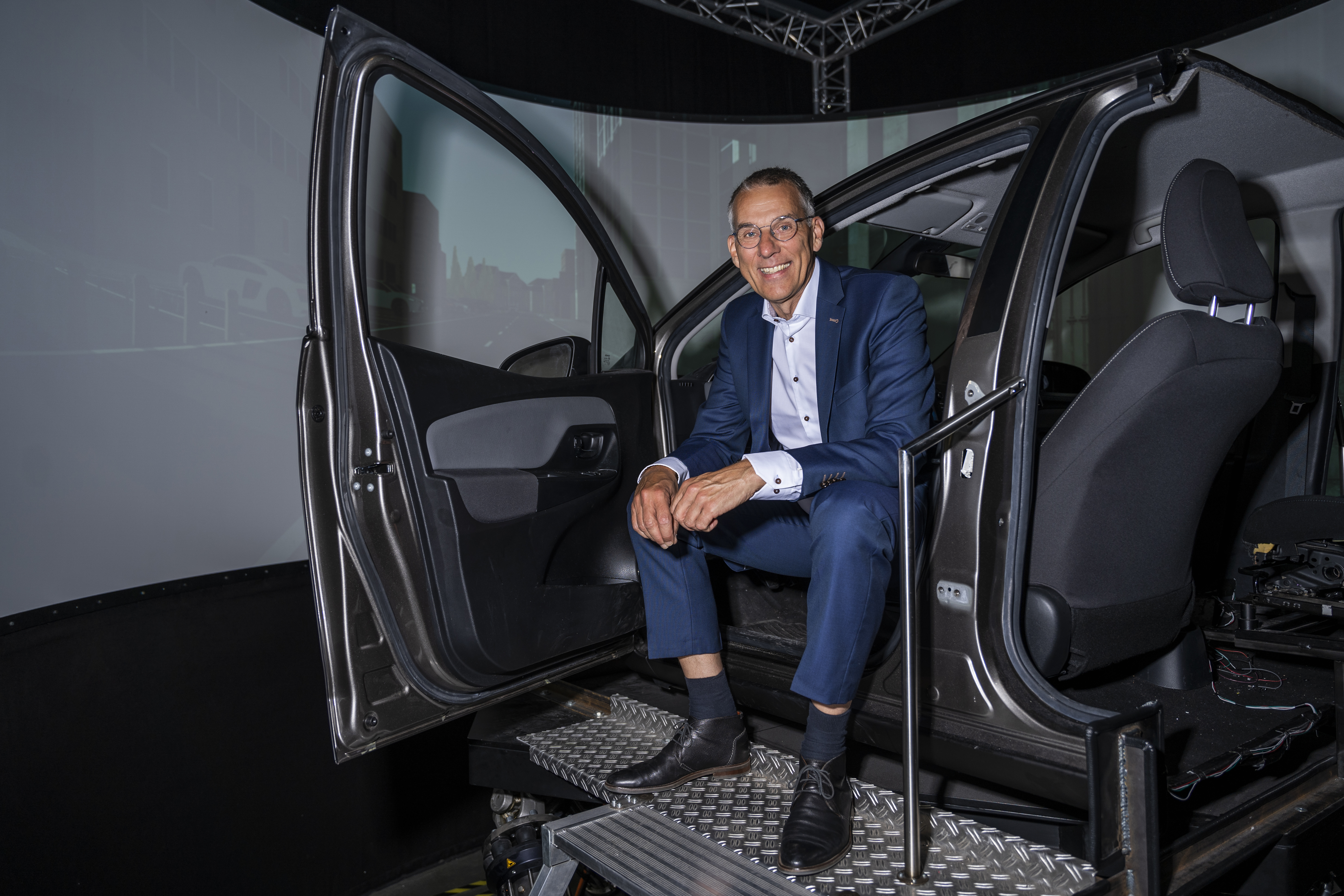Reducing motion sickness crucial to acceptance of self-driving cars
Self-driving cars still have a number of hurdles to overcome. Reducing motion sickness is a crucial factor in this respect. This is what Professor Riender Happee will argue in his inaugural address at TU Delft on Friday, 6 October.
Self-driving cars have great potential for providing safe, comfortable and sustainable transport. And developments are ongoing. In San Francisco, for example, it is already possible to order a self-driving taxi. Nevertheless, there are still a number of obstacles to overcome before self-driving cars are truly accepted by the general public.
Self-driving car sickness
“I argue that a high level of comfort in self-driving cars is crucial for acceptance,” says Professor Riender Happee of TU Delft’s Faculty of Mechanical, Maritime and Materials Engineering (3mE). “After all, that comfort is necessary in order to profit from the great advantage of self-driving cars: the fact that you can take your eyes off the road during your journey, and literally have your hands free for other activities, like reading.”
“Self-driving car sickness, i.e. motion sickness in self-driving cars, is very important in this context. Motion sickness occurs mainly when passengers take their eyes off the road. My research therefore focuses largely on how we can explain and prevent motion sickness in self-driving cars.”
Driving to nausea
The main theory about motion sickness is that of sensory conflict. This assumes that motion sickness occurs because there is a big difference between the motion you experience and the motion (and acceleration) you expect. “Fortunately, there are many ways to mitigate this conflict. For example, we are already achieving a 50 percent reduction in motion sickness in simulations and experiments in which we literally drive people to nausea. This can be done by adjusting the driving style and taking corners less quickly for example, and also by means of active suspension or by adjusting the seat. Another approach is a certain acceptance, in which case you simply give a warning when you know a more challenging stretch is coming up, with lots of turns or busy city traffic: “now take your eyes off your screen for a while and focus on the horizon.”
Individual differences
As far as motion sickness is concerned, there are significant differences from one individual to another. Some people get carsick very quickly, while others hardly ever experience motion sickness at all. These individual differences are also part of Happee’s globally leading research on driving comfort and the modelling thereof.
“All in all, there are many factors involved in motion sickness,” notes the new professor. “In the coming years, we want to further develop and integrate biomechanical models of the human body, the perception of motion, and the development of motion sickness, which will help us gain an even better understanding of the processes involved in the development of motion sickness. With these models and the underlying understanding, we will be able to design self-driving vehicles much more effectively, taking circumstances, tasks and individual differences into account.”
